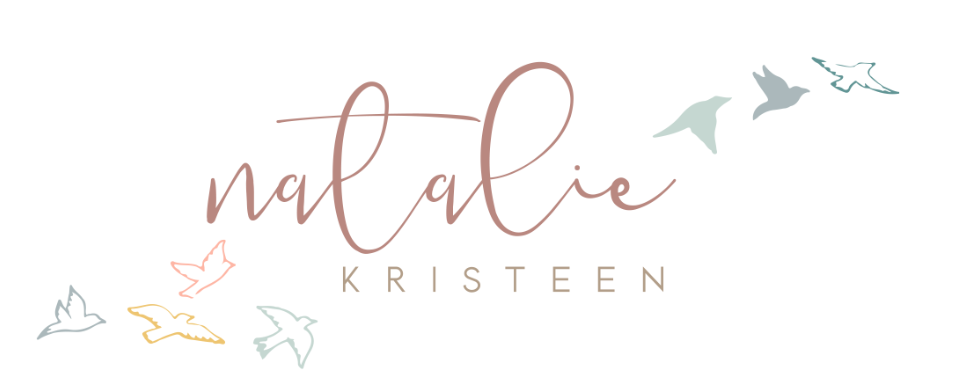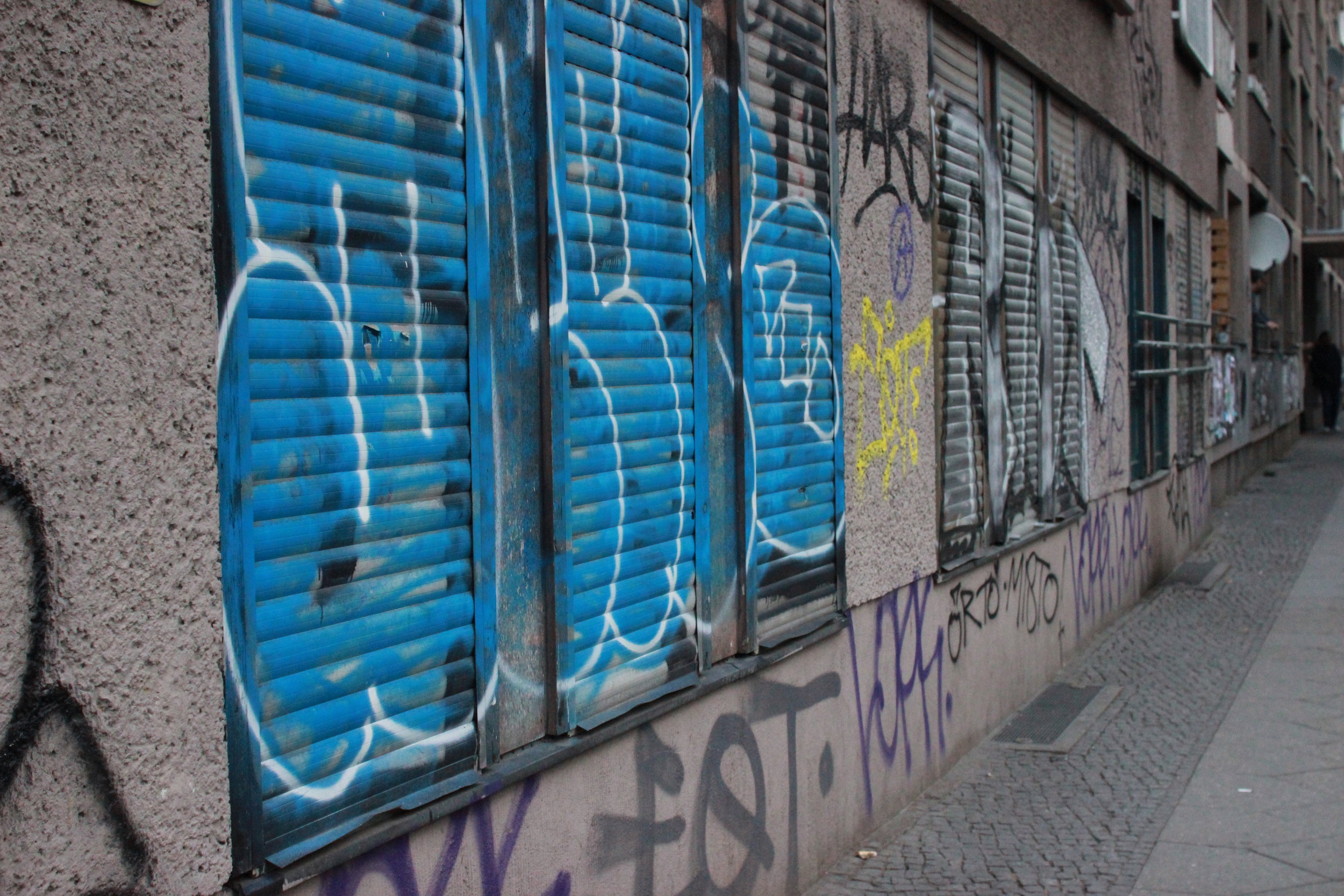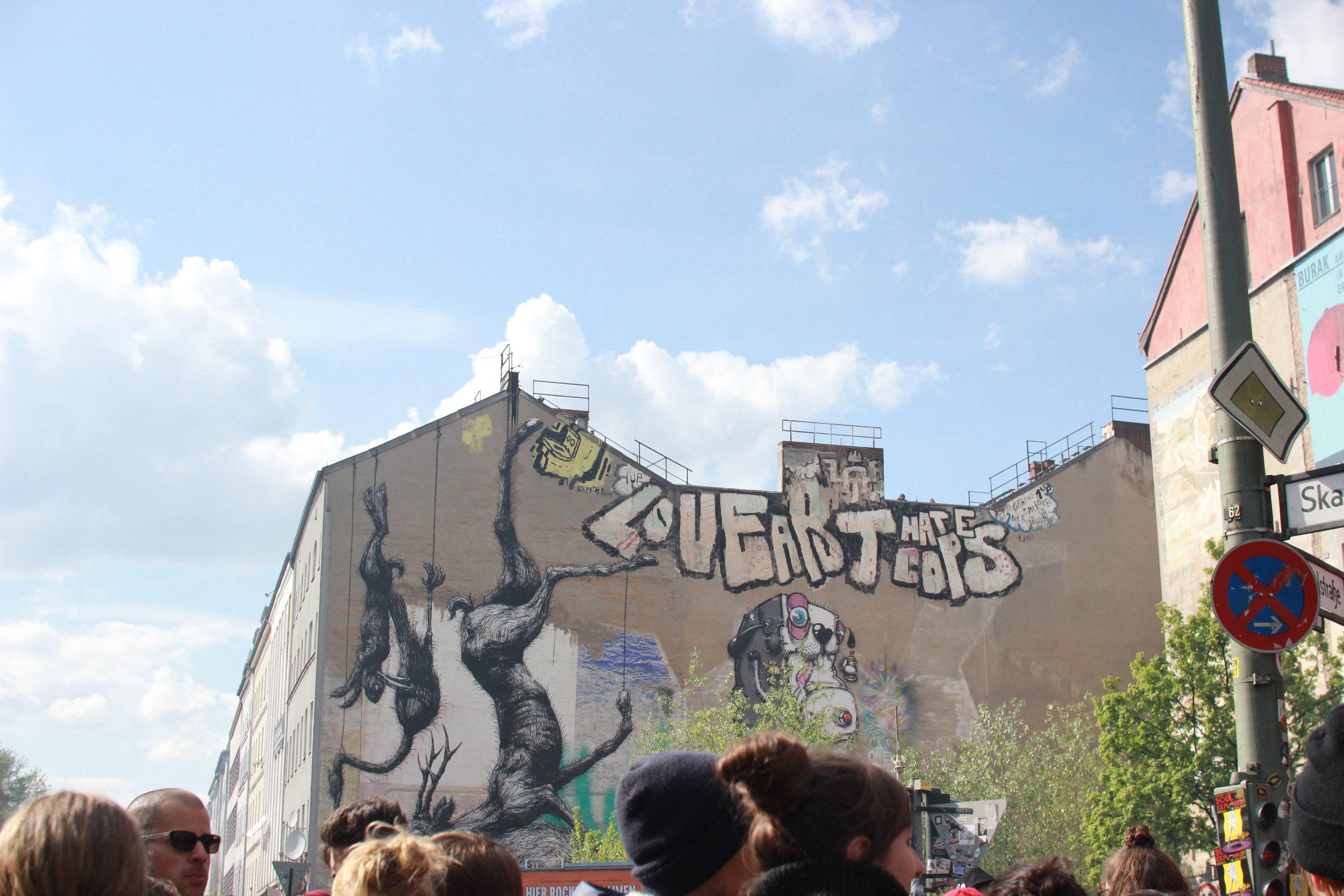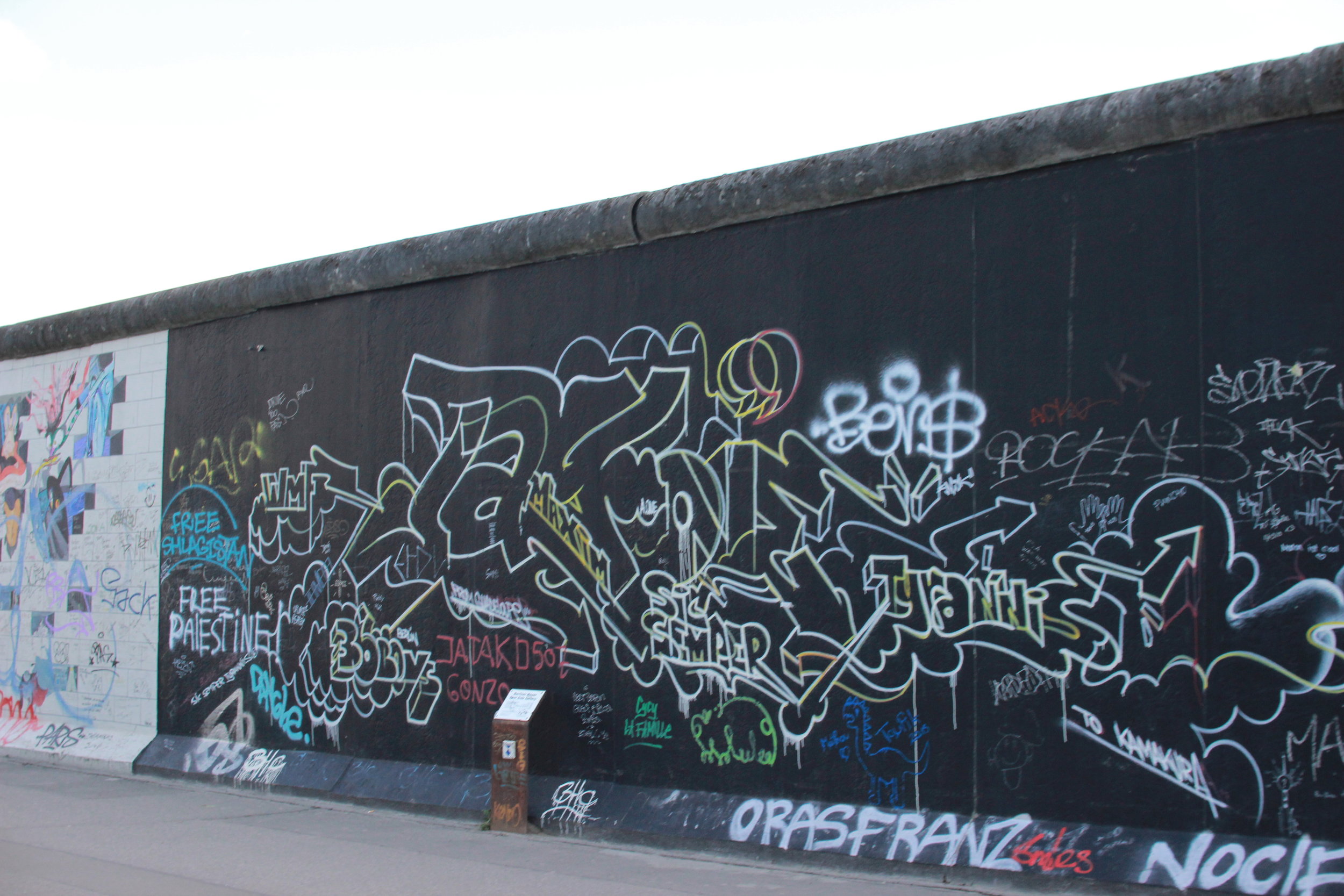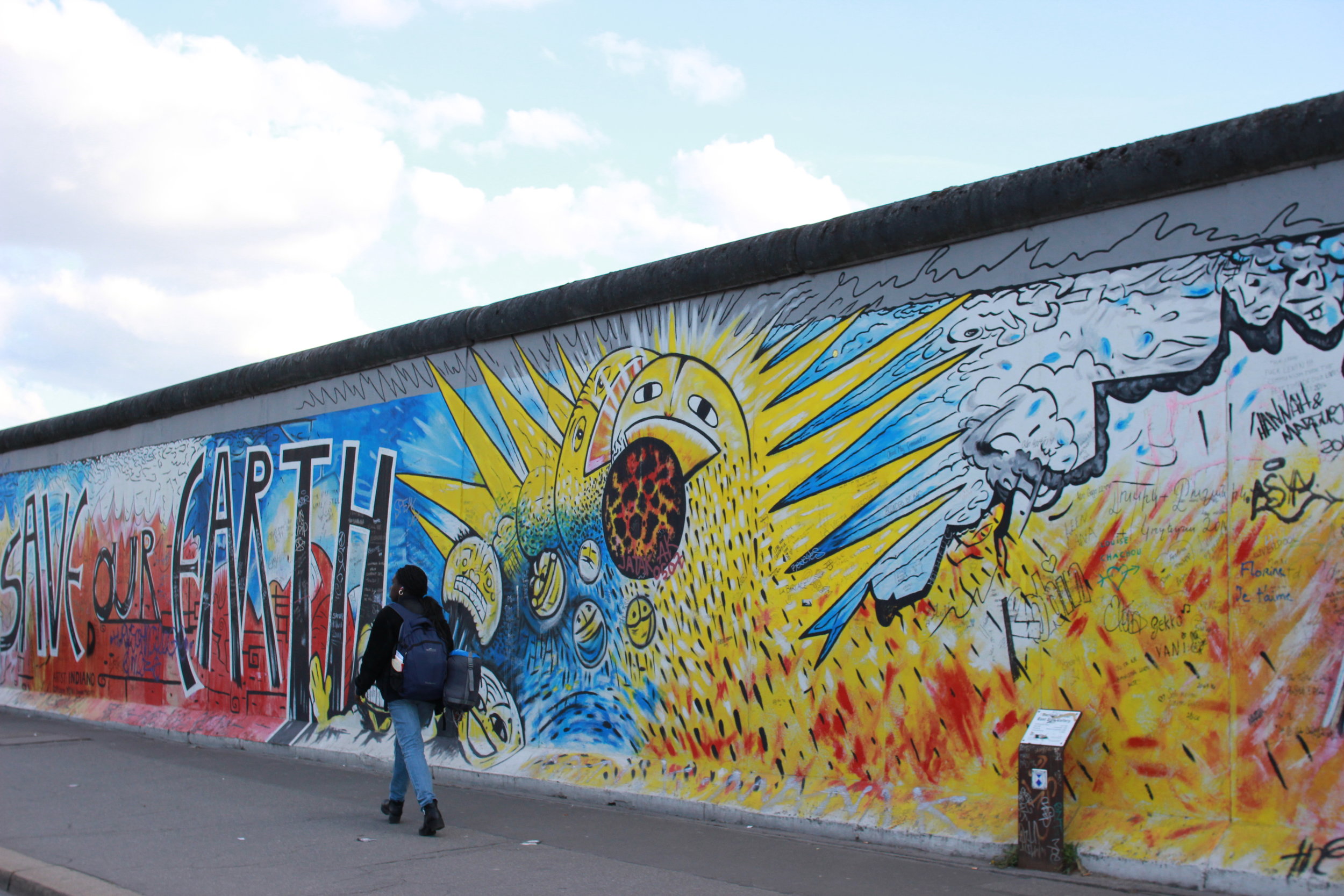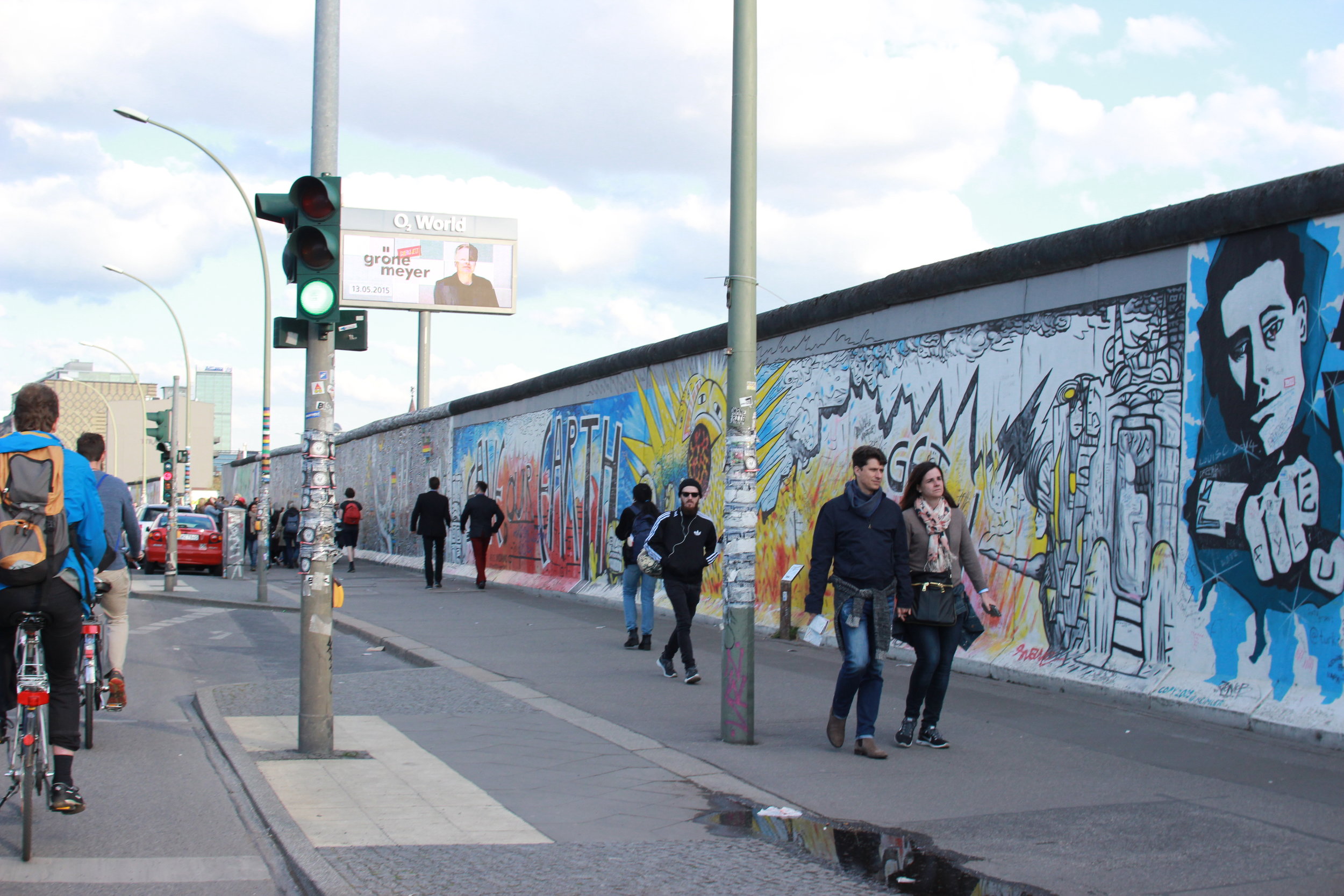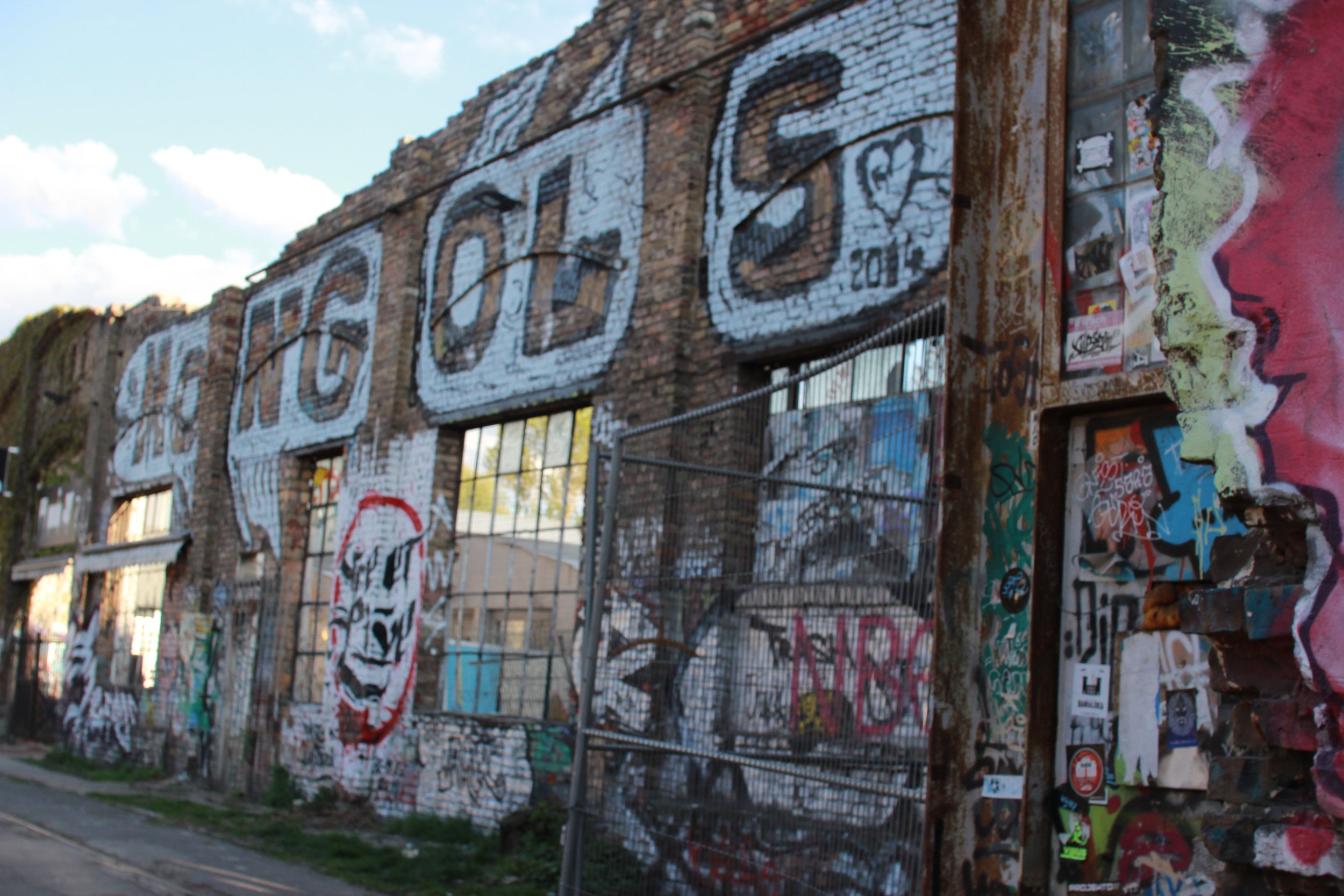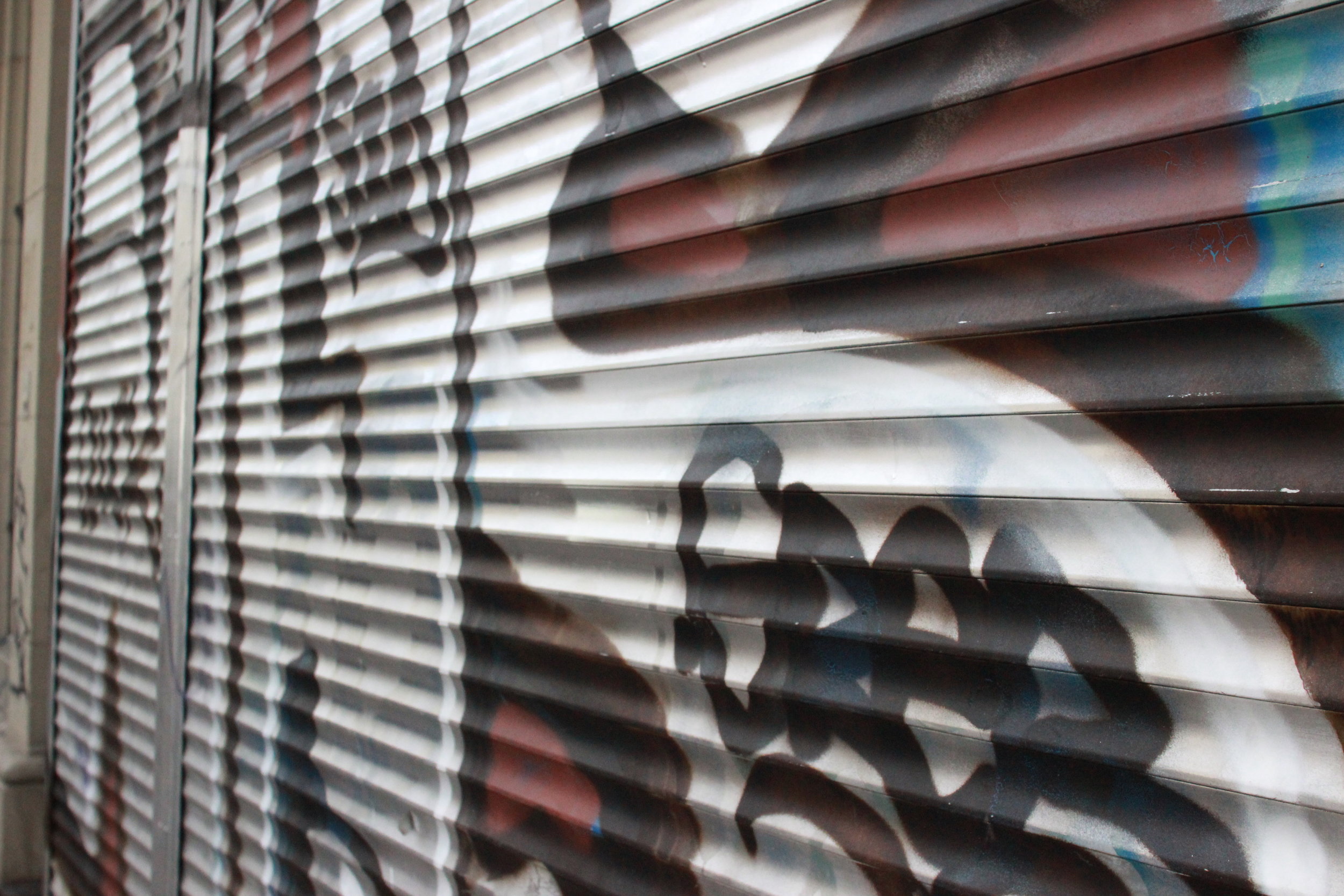 We strolled the last few streets in the Czech Republic and I noticed her ferociously scrubbing the bottom of a building wall. Painted creamy white, nearly egg shell, I wondered why she was even trying to remove the paint that was stained into her building.
We strolled the last few streets in the Czech Republic and I noticed her ferociously scrubbing the bottom of a building wall. Painted creamy white, nearly egg shell, I wondered why she was even trying to remove the paint that was stained into her building.
The only sensible way to remove it was to cover it up with fresh paint, bandage it, pretend it did not exist.
Berlin drowns in graffiti.
At first glance, graffiti ruins the beauty of what was meant to be seen. It demolishes the designer's plan, frustrates the one who believes he is in control. Graffiti leaves its mark, the maker's mark, claiming itself to be remembered for as long as it is visible.
Sometimes the marks of graffiti remain visible for an entire lifetime. Sometimes it is impossible to forget and completely demolish the mark.
Graffiti, no matter how ugly or offensive (or beautiful and lovely), is built into the stone. We cannot fully and completely remove graffitin art. We can paint new coats on top, bandaging the thing we deemed as unworthy to be seen, but soon enough, more graffiti will replace the fresh coat of pure paint.
Graffiti is inevitable it seems.
Even on a wall so rich in history, so important to a country.
Graffiti on the walls of our lives are disguised as vandalism. We cannot remove the graffiti, the unwanted art being painted so violently or silently, that is being etched into the stone walls of our lives. No matter how gravely we despise the graffiti, no matter how unplanned and unwanted, the story is being painted upon us and we have little say in what it looks like.
We do not craft the way of our own journey, no matter how severely we feel entitled to.
Though we do not choose the color or image of the paint plastered into the parable that we live, we do have the freedom of response.
Some respond with fresh coats of paint, attempting to bandage and cover up the ugly and unwanted. Others ignore the graffiti completely, pretending it does not exist; while others add to the graffiti, numbing ugly with ugly, pain with pain. Some embrace the paint as art, the damage deemed as refinement, and make something beautiful of it.
Not always does one jump to seeing the beauty in the art of graffiti, the graffiti grafted into the glimpses of life, disguised as vandalism but residing as grace. It takes practice and discipline to honestly and immediately see pain as grace, graffiti as art.
I will not pretend that I see all of the graffiti etched into my journey as beautiful art; not yet anyways. I accept that one day, [some day, whether near or far], I may look back at the scribbles and doodles and irrevocable incisions imprinted into my heart and see beauty. I may marvel at what once ripped me to pieces and broke me in half. And then in half again. But I am not yet at that place of beautiful brokenness, charming wholeness.
That place of constant delightful goodness is freeing and light, joyful and attainable. I know because I once resided there so carelessly, so freely, so easily and naturally. Confidence assures me that we will be there again someday. Fear tells me I should pretend I already am. Integrity begs for honesty.
So for now, I will walk the road and peek into the puddles to see reflections of the sky so blue and clouds so silky, soaking in the small gifts that I am able to honestly see, while the walls covered in graffiti escort me to the next chapter. I believe at the end of the chapter [or maybe not until the end of the story], I will come to the end of myself. And at the end of myself is the opening of the hands, which leads to surrender. Surrender ushers in grace.
The graffiti walls lead us to grace. Somehow and somewhere, there is always grace in the graffiti.
